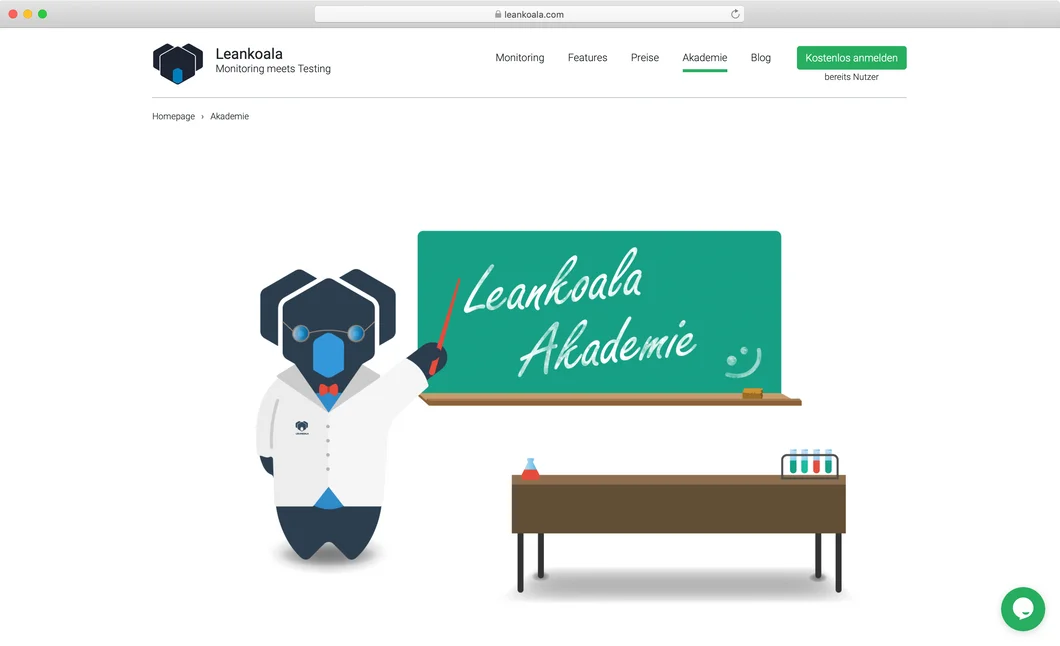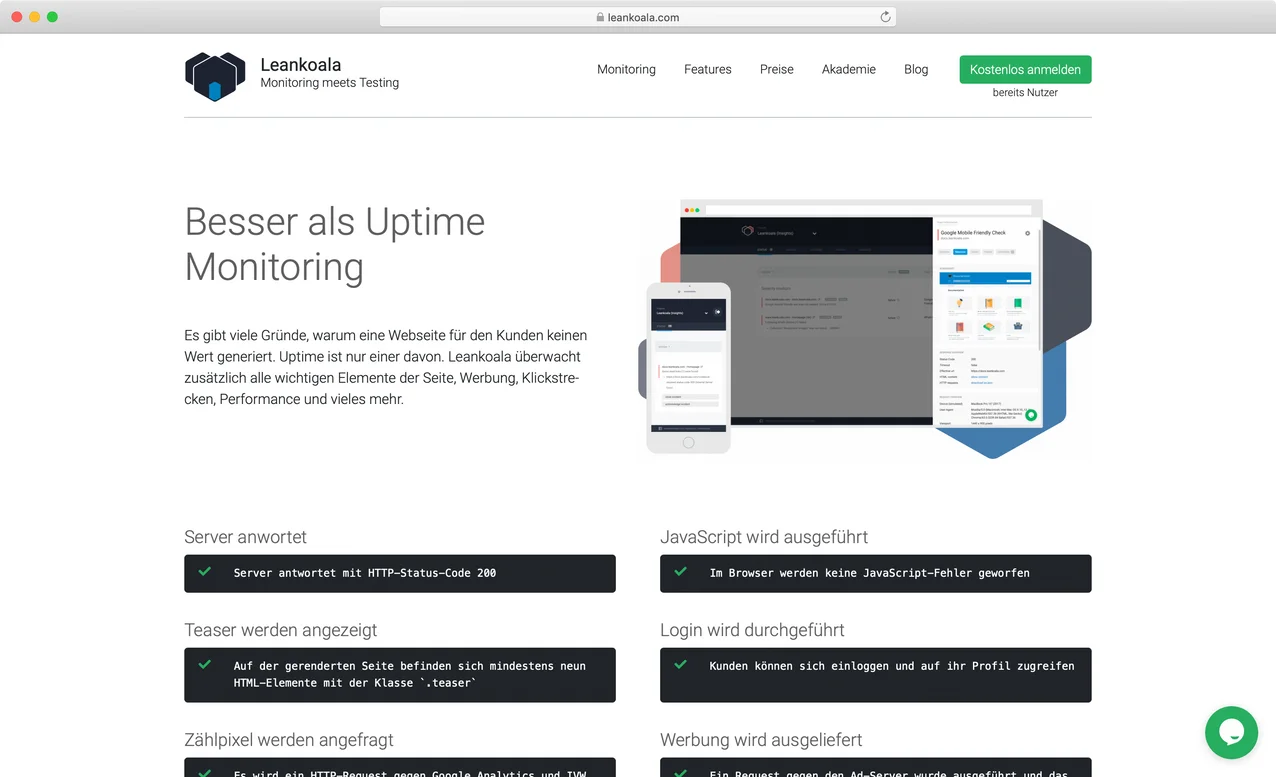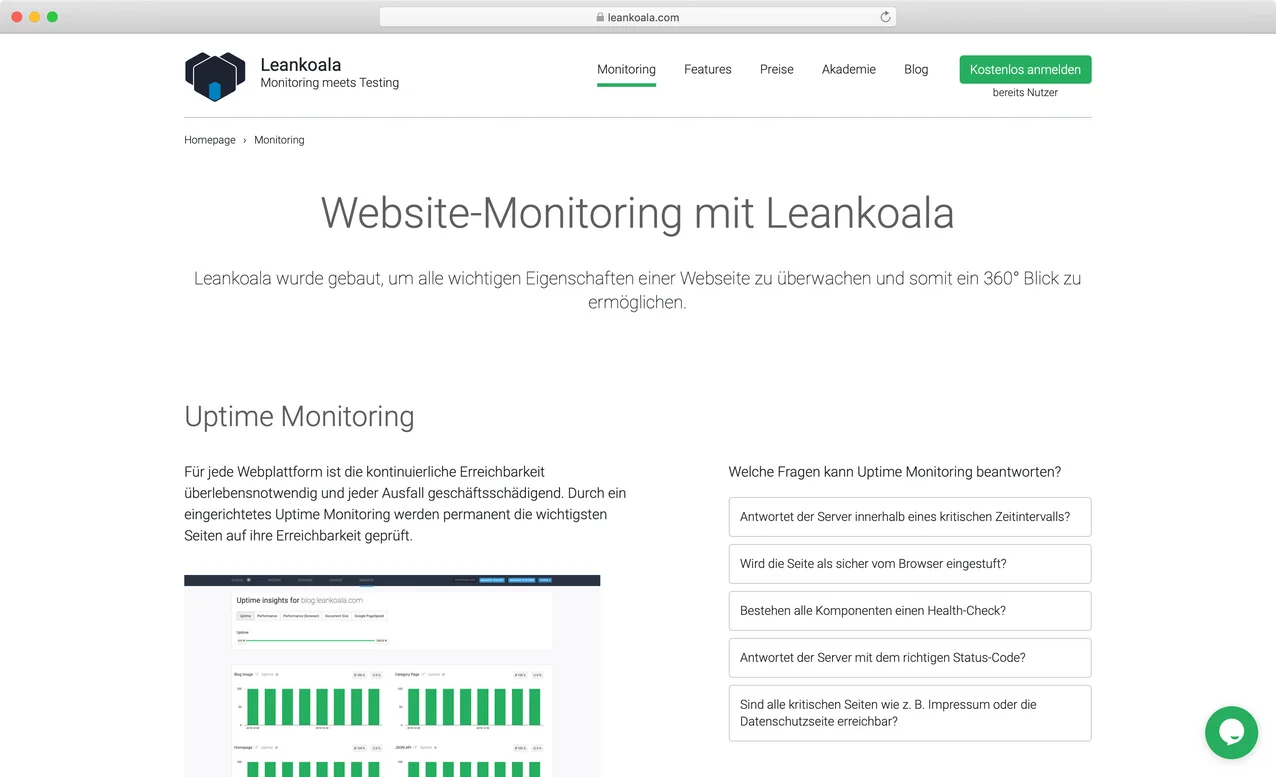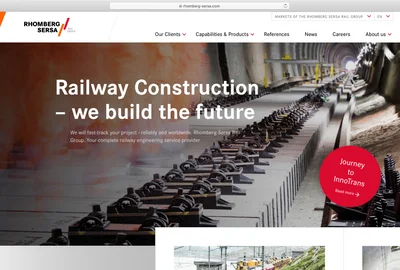leankoala.com
Sulu is the obvious choice for Leankoala, a Symfony-based outage monitoring service
Leankoala give Sulu their seal of approval as Symfony devs, businesspeople and experts in performance and uptime.

When choosing a CMS for his business, Sulu was the natural choice for Nils Langner as a developer, entrepreneur and “koala”. A “QAler” — pronounced “Koala” — is what Germans call a Quality Assurance expert. You could say Nils is king of the koalas. He is the co-founder of Leankoala, a SaaS solution that scans websites for outages in whole pages, specific parts of pages, and services, then notifies the operator if it finds any. Nils has also authored a book on PHP, and used to publish the highly popular “php hates me” blog.
In an era of decoupling and microservices, there are more potential points of failure that have to be monitored and tested. That’s why large publishers and other website operators need to know every bit of their website is working: not just that the homepage returns a 200 status code, but that all of the mission-critical parts are running properly. Nils and Stefanie Langner, from Hamburg, Germany, founded Leankoala three years ago to reassure people that their websites are firing on all cylinders all of the time.
Ensuring Seamless Web Functionality
When a website goes down, so does revenue
“There are many reasons a website can go down,” explains Nils. “It could be that your ad server or a microservice changed their API without you noticing.” If you’ve setup Leankoala, it will run checks to ensure key attributes are available, for example, whether the ad server is responding to requests. As soon as something goes wrong, Leankoala will notify you. They call this attribute-based testing and monitoring.
Especially for people with ad-based business models, the quicker they can get back up and running, the less revenue they lose. At the time of writing, Leankoala has carried out more than one billion checks overall.
The search for a CMS
When they founded Leankoala, Nils and Stefanie needed a CMS for their sales and marketing content, for hosting their “academy” section with tutorials, and for serving documentation. It needed to meet Nils’ high standards as a Symfony developer and QA pro, but also able to deliver business value by making it easy for Marketing and Sales staff to do their jobs.
As sticklers for uptime on every webpage, Stefanie and Nils also kept an eye out for a CMS that could perform without interruptions.
Sulu CMS — the obvious choice for a Symfony developer
As a Symfony developer who wrote Leankoala in his favorite PHP framework, Sulu was the obvious choice for Nils.
Because it’s a content management layer on top of Symfony, the flat learning curve for Symfony devs is one of Sulu’s major benefits. Nils welcomed the smooth developer experience: “I knew how Twig and Symfony worked, so I could read the examples straight away. For me, whether I write a controller for Leankoala in Symfony, or for Sulu, makes no difference. I could use all the mechanisms I had already learned.”
Exactly what you want in a CMS
Nils was also taken with Sulu CMS’s simplicity. “It’s so simple.” He explained the standard template as delivered is very minimal. “The default settings are very good, and anything else I need I can easily add with Symfony.” Adding new fields is as easy as editing an XML file.
“It’s exactly what you want in a CMS. For example, images are compressed and resized to the perfect dimensions for each specific page.”
Nils is definitely sold on Sulu’s performance prowess. “Our response times are 80ms. Uptime is 100% if you discount any outages not attributable to Sulu.”
Leankoala recently updated their website to the newly released version 2 of Sulu. “The process was really smooth for a major version change,” Nils enthuses. “The whole thing took about two hours. This included updating the custom logic. For example, we have a custom controller that automatically pulls in the total number of checks Leankoala has carried out and displays this on the website.”
The business case for Sulu
Managing the website is intuitive for content creators, saving valuable resources. Nils explains: “Before, our sales people needed a few days to build a landing page. Now it’s a matter of two hours — and that’s only because it’s the time it takes us to sign off the content.”
This is because editors can choose a page template then assemble landing pages from predefined blocks. Editors have the freedom to build pages as they like, without needing to know HTML. At the same time, the whole website has a consistent look and feel. Whether their pages include call-to-action buttons, use different page layouts, or include features like image galleries, everything editors create conforms to the Leankoala corporate identity.
Nowhere to hide for bugs
“Because Leankoala thinks in blocks, it plays well with Sulu,” Nils explains. “I’m a stickler for corporate identity and Sulu’s block-based approach makes it easy to keep the look and feel consistent because each content element can be identified separately.” Additionally, because Sulu omits an entire block if it contains an error, checking for a block’s surrounding HTML element is enough to check for the existence of the entire block. When Leankoala and Sulu work together, they can continuously check that blocks and individual page elements are being rendered.
This means bugs and inconsistencies have nowhere to hide with Sulu and Leankoala.
A seal of approval
With Sulu, we’ve focused on delivering an effortless developer experience by making Sulu easy to learn. If you know Symfony, you will adapt to Sulu quickly. We’ve also built a system that is easy for content editors to use creatively without risks. Check out their guide to using Leankoala and Sulu (in German) to ensure that once your site is up, it continues to run smoothly.
The fact that Nils and his team give Sulu their seal of approval, as Symfony devs, “koalas,” and businesspeople, is a great compliment for our CMS.
Case Studies




